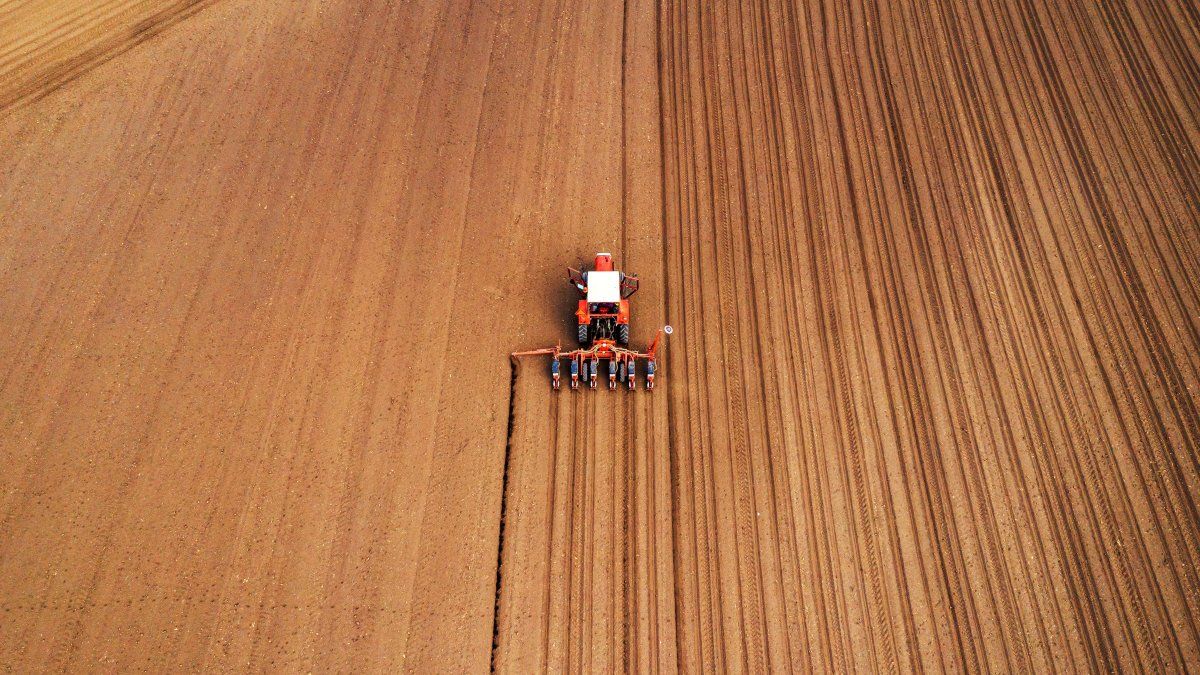Although the agro liquidation volume in June was US $ 3,700 millionand there are estimates that speak of an even better July, Among the field actors pessimism advances. This follows from a recent survey carried out by the Center for Agribusiness and Foods of the Universidad Austral, which found that The confidence among the producers about the situation of agriculture for the next 12 months fell 19% between March and June.
Carlos Steigerdirector of Austral Ag Barometterhe explained that That data was “the most worrying” of the measurement made by the house of studies. “The producer needs profitabilitybut also clear and stable play rules for at least five years to decide long -term investments. Today that scenario is not”, Explained the analyst.
And he added that “at the current situation, marked by political and economic uncertainty, Investment decisions in fixed assets as machinery are postponed”
The survey also found that The investment expectations index fell 8.5% compared to March and accumulates a decrease of 32.5% since November 2024. At present, 63% of producers consider that it is not a good time to invest, compared to 59% who thought the same in March.
The worsening of the variables for agriculture
In a recent report by the economist of Mediterranean FoundationTobias Lucero, it was explained that the Soy and corn withholdings rise From July “It does not happen at a favorable time for the agricultural sector”.
“The current context combines a real bilateral exchange rate (Argentina-Eeu) at historically low levels-12% below the last 25 years average– and depressed international prices: the fob value of soybeans, measured in real terms (adjusted by US CPI), It is 24% below its historical average“, argument.
Similarly, the economist specialized in agriculture, Marianela de Emilio, “The evolution of local macroeconomic indicators evolves downwhile the prices of the grains also do so, to which the rise of retentions is added. “
field retentions agriculture grains
The withholdings re -governed on July 1.
Depositphotos
THE “MORTE” OF THE FIELD
In dialogue with Scopethe agricultural consultant Javier Preciado contributed nuances and said “There is a combination of factors, some positive and other negatives” within the sector. On the one hand, he said that it comes from “a campaign with yields in soybeans that were greater than expected, even more than what the producers themselves expected.”
To this he added that “it was an autumn with great rains that allowed after 3 years a recharge in the profiles of the soil very important”, which “is giving rise to growing the area with wheat” and that also enables the possibility of “being able to sow earlier, if the temperature allows it.”
However, he also recognized the decrease in international prices and “high costs, especially in transport and energy, in addition to” an infrastructure that is deteriorating, which also makes logistics costs more expensive. “
“You have to bet that you do very well with the yields so that you have a positive margin,” said Preciado, who commented on the “bad mood” that generated among the producers “that everything remains the same with the question of retentions.”
Agro dollars: the day after the settlements
With private estimates that speak of an entry of “agrodollars” in July of up to U $ 4,450 million By affidavits of sale abroad (DJVE) made at the end of June (before the retentions rise again), Lucero considered “probable that the presentation of new DJVE It slows for at least the next two monthsuntil the shipments are already depleted and the primary marketing is reactivated, something that It usually happens towards the end of September or Octoberwith the beginning of the sowing work of summer crops in several regions. “
However, the Mediterranean Foundation economist warned that “What is collected or liquid for more ‘now’ will be made at the cost of lower income in the ‘future'” for the governmentin a context in which more and more organisms are alerted to The need to accumulate currencies by the Central Bank.
And he added “The missing opportunity remains as a negative balance to move towards a more permanent reduction in the tax burden On the agro -export sector, in an adverse international context in prices and with significant internal challenges in terms of competitiveness. “
Anyway, Emilio warned the risk he would imply for producers not to liquidate the harvest: “Run out of selling available or making coverage in the future leaves merchandise exposed at the risk of low pricein the midst of a macroeconomics that will not compensate for the drop in dollars with devaluation. “
Finally, Preciado said that the agriculture is “in a moment of transition”, and added: “The issue will be the price of cereal. If you collapse you will have a generalized non -sale situation. If the priced of the soybeans remains around $ 320,000 a ton, obviously that humor will improve.”
Source: Ambito




